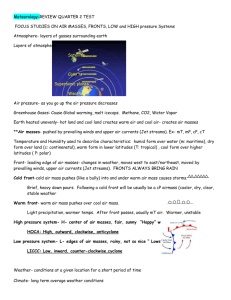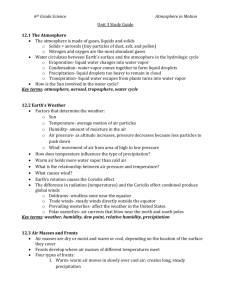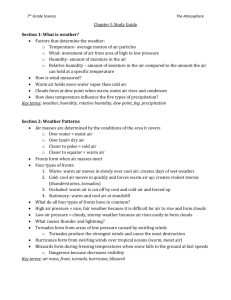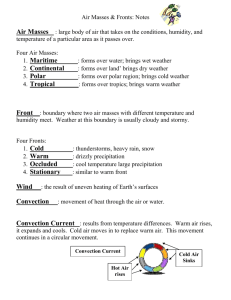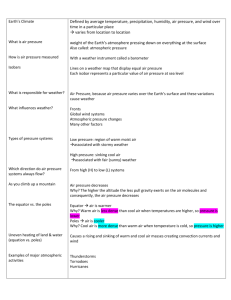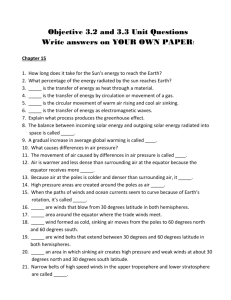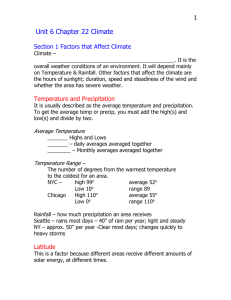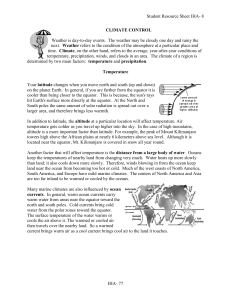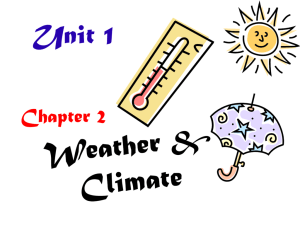Lacemop – Factors that affect climate
advertisement
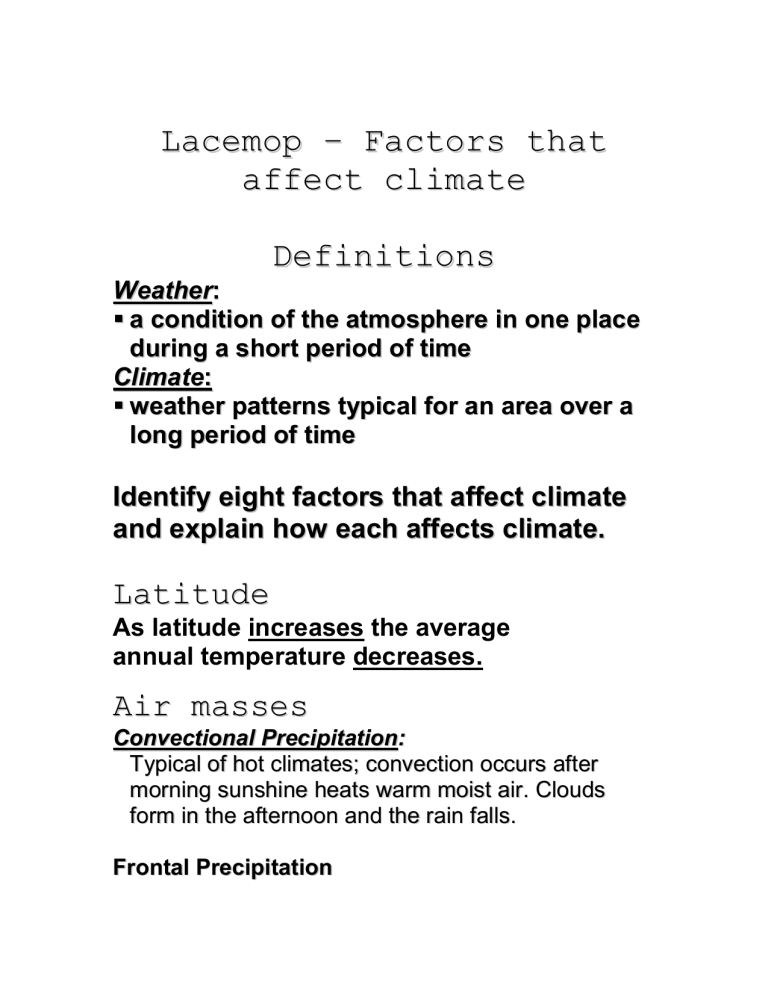
Lacemop – Factors that affect climate Definitions Weather: a condition of the atmosphere in one place during a short period of time Climate: weather patterns typical for an area over a long period of time Identify eight factors that affect climate a n d e x p l a i n h o w e a c h a ffe c ts c l i m a te . Latitude As latitude increases the average annual temperature decreases. Air masses Convectional Precipitation: Typical of hot climates; convection occurs after morning sunshine heats warm moist air. Clouds form in the afternoon and the rain falls. Frontal Precipitation when 2 fronts of different temperatures meet. Warm air forced upward by heavier, cool air. Rising warm air cools = precipitation--Most common type Air masses take on the weather of the place they come from. continentality Land and water absorb and store energy at different rates. Land changes quickly — water more slowly. Opposite air blows off the water and moderates land temperature. In Plain English: Temperatures along the coastline are always milder (cooler in summer, warmer in winter) due to the effect of breezes coming from the water. Large bodies of water have a moderating effect on land temperatures. Elevation As elevation increases, the average annual temperature decreases. Mountains Barriers Mountains block air masses and causes Orographic Precipitation: • Warm moist air forced upward when passing over a mountain. Warm winds cool as they rise over the mountains and clouds form • Air is warm and dry on the other side Windward: mountain side which faces the ocean Leeward: mountain side which is in a “rain shadow” (no precipitation received) Windward Side: cool, moist Leeward Side: warm, dry Ocean Currents • Help to distribute heat • Carry warm water from tropics to poles and return cold water to the Equator • Winds affect current movement • Air masses take on water temperature Cool Currents: Cooler climate Warm Currents: Warmer climate Pressure and Wind Rising warm air = low pressure Falling cool air = high pressure Wind moves high to low Movement from poles to equator and back Coriolis Effect: rotation of the earth bends the patterns of the wind Winds blow in constant patterns and are called prevailing winds. Historical Fact: Many were named for the direction they blew…some were even given names because they were used by trading ships through the region… • • • • • Doldrums: windless area near the equator Horse Latitudes: Historically, ships would lighten their loads in order to take advantage of the slightest wind such as cargo, excess supplies and livestock…this also included horses. Winds distribute the sun’s heat around the earth. Global Warming The increase in the average temperature of the Earth's near-surface air and oceans since the mid20th century and its projected continuation. Earth’s atmosphere acts a a greenhouse trapping 50% of the sun’s heat radiation. Clouds, water vapor and carbon dioxide absorbs the heat reflected by the earth and radiates it back again to keep the balance. • Burning of coal, oil and natural gas has caused the CO2 levels to rise—increased burning will trap more heat in the atmosphere. • Some scientists predict it will cause more extreme global weather patterns.



